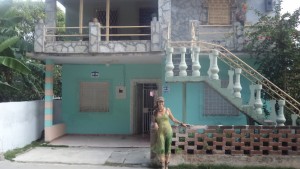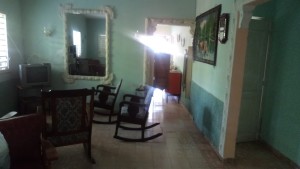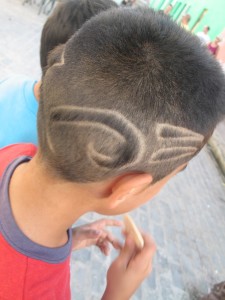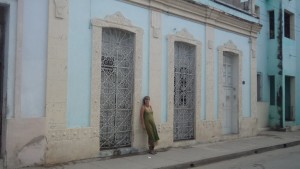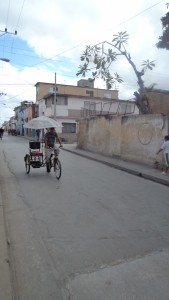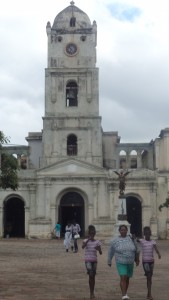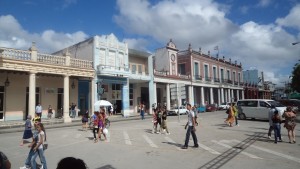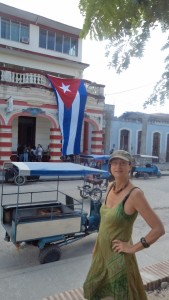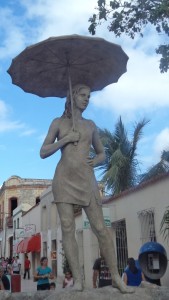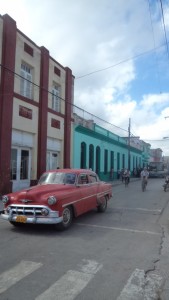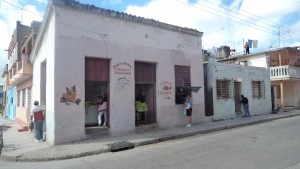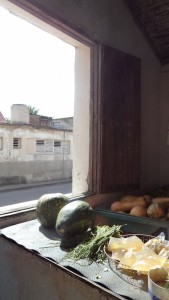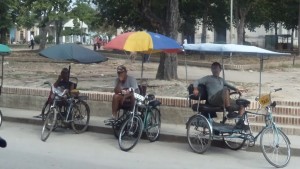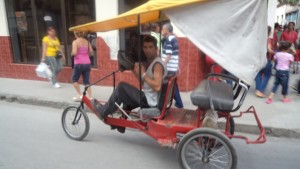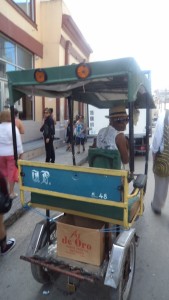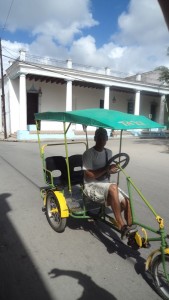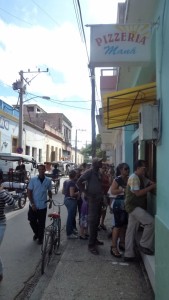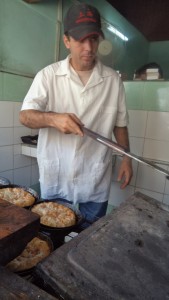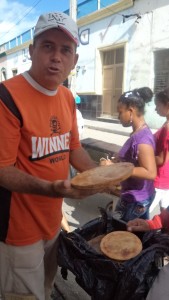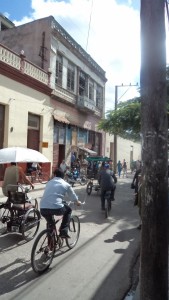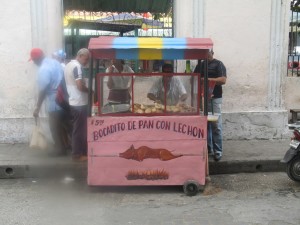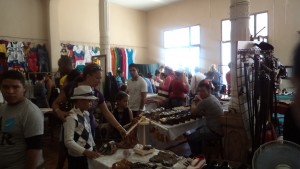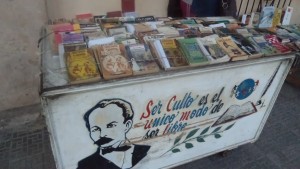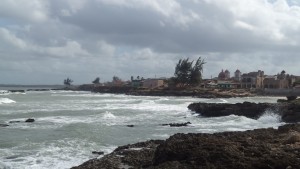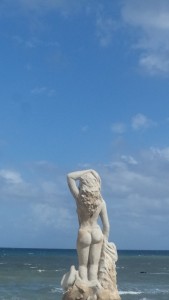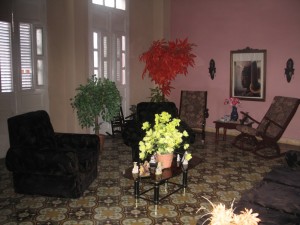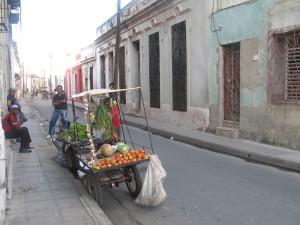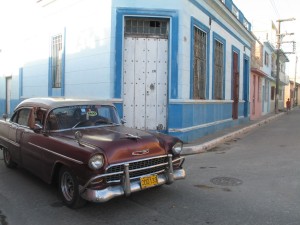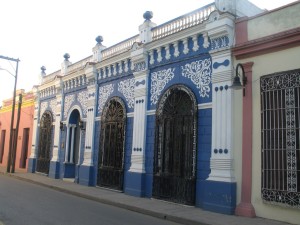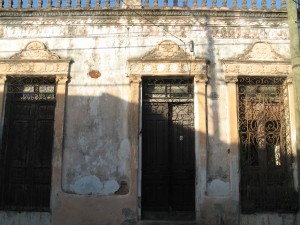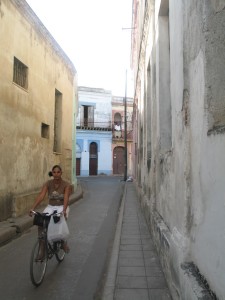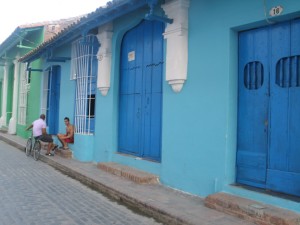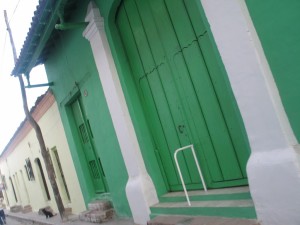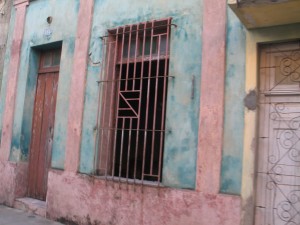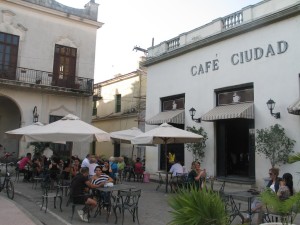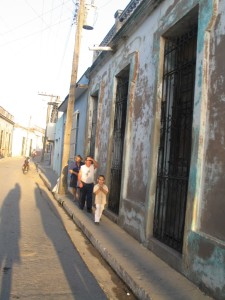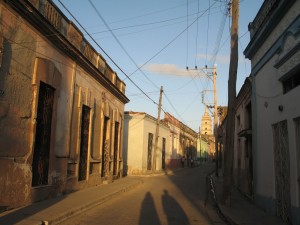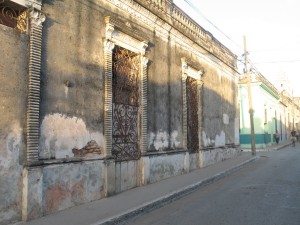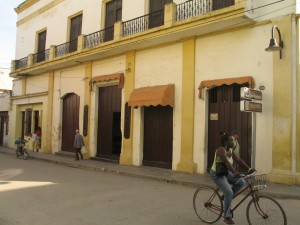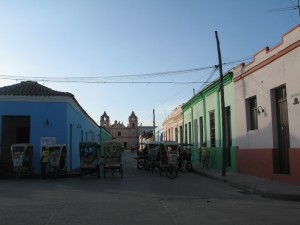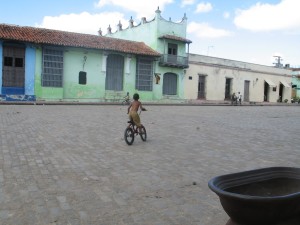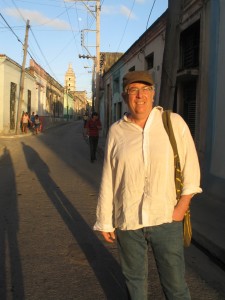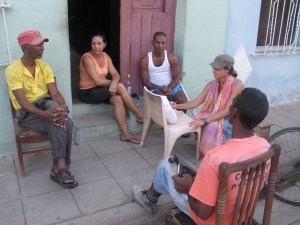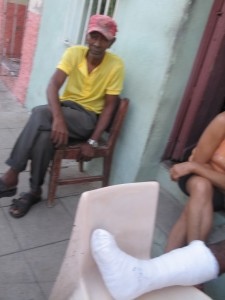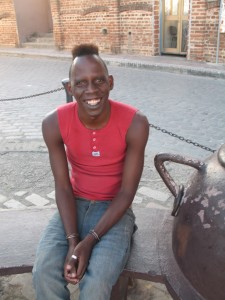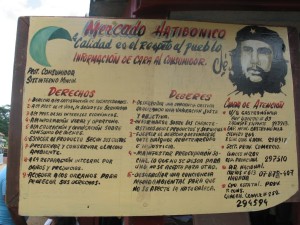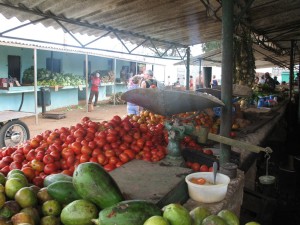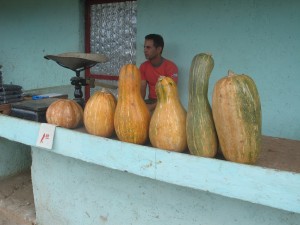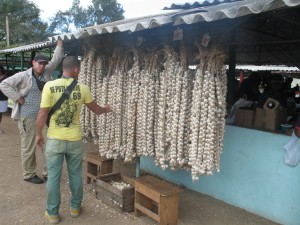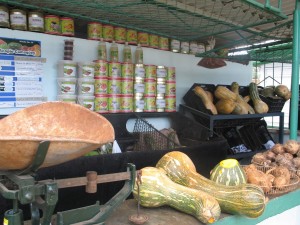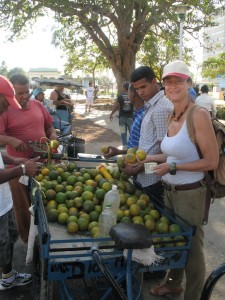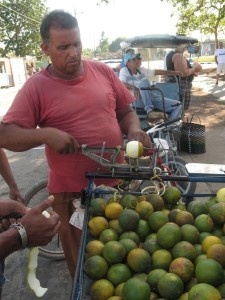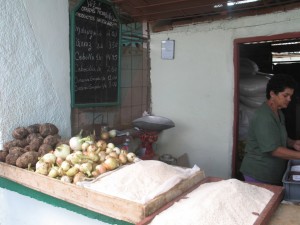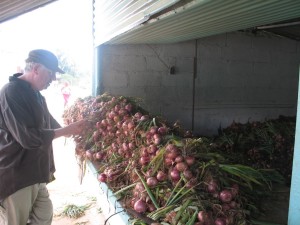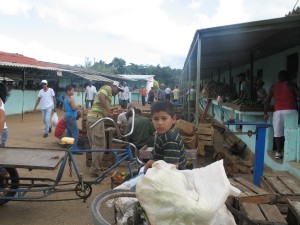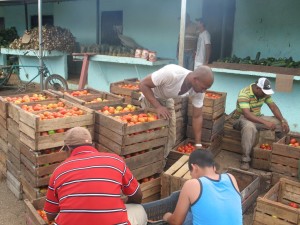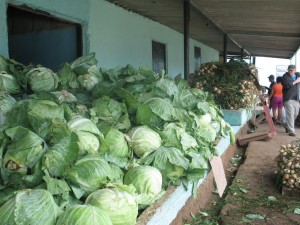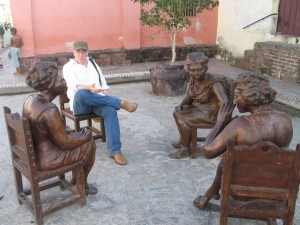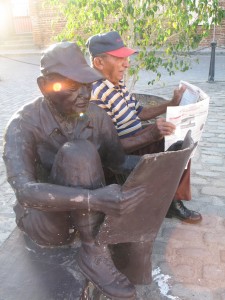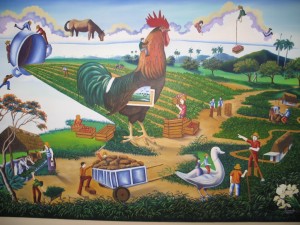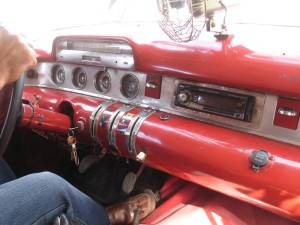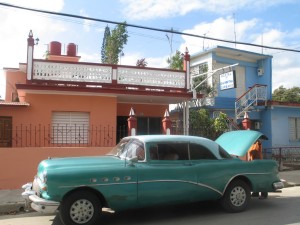While we have been traveling all day, we want to get a sense of Holguin and go exploring for the evening. We can rest later! Holguin is known for the lively plazas. And indeed it lives up to the expectations ~ lively it is!
First bocadillo: juicy skewers of pork and onions.
Next we walk by a grand old corner building where a youth orchestra is giving a classical music concert. Doors and windows all open wide to the street. There are as many people outside as there are sitting inside, all enjoying the music. We can’t remember the last time we ran into classical music in Nicaragua ~ never in fact!
This reinforces an observation from last year ~ Cubanos have a high appreciation for culture…. be it dance, music, sculpture and painting.
Outside the concert is bocadillo number 2 – pork-pulled sandwich for 50 cents.
At one of the corners of the square is a make-shift stage. Around 11:30pm, a band starts to gather ~ there are trumpets, trombones, drums, piano, 3 singers… The music is solid, high quality, afro-beat. Not quite Cuban Jazz, but getting close. Now this is really fun!!
The crowd amasses, mixed in all respects. Boys and girls, old and young, black and white.
EVERYONE is dancing ~ and this is ground zero for not only salsa but all sorts of Latin dancing.
Most noticeable feature in the crowd are the creative, artistic haircuts sported by young men ~ from exaggerated mohawks to amazing geometric designs of buzz haircuts, using heads as canvas. The girls are hot. The guys are stylish. It’s quite the scene. By 2am we return “home”, thoroughly satisfied with our first re-experiencing of sultry Cuba.
The plazas don’t disappoint. Majestic churches are surrounded by Spanish Colonial structures, most of them in pretty good shape. The colors are soft pastels all around.
Street food is very popular at lunch time and most cities offer up Cuban style pizza (which is like a deep dish pizza folded over and toasted) and pulled pork sandwiches. The best local food is, as usual, the street food.
The coast line of Gibara graced by a Latin beauty.
After returning to Holguin, we take a 3 hour bus ride to the city of Camaguey, which is known for its’ architectural treasures.
.
When we arrive at the bus station we hear someone calling “Benjamin” — a Casa Particular has apparently been arranged for us by our Casa Particular in Holguin, even though we didn’t request the help. A bicitaxi is awaiting our arrival and pedals us to our house for the night.
.
The house is a large spacious house with patio area outside the room. The house feels grand and the ceilings high. The casa particular owner reminds us both of our grandmothers in that she is very much overly concerned about what we want to eat for breakfast (the next morning!) and where we are going and what we are going to do. She has a hard time understanding that we have not decided much of anything ahead of time. At any rate, she is very friendly and hospitable, as are most of the people that host Casa Particulares.
At all the stores and banks there are two buckets of water at the entrance for people to wash their hands. We hear that there has been a cholera outbreak in Santiago a few hours away, after Hurricane Sandy hit that region rather hard. The economy is bustling and the streets are full of people on foot, bikes, bicitaxis, horse driven carriages and a few cars.
.
Walking the streets of Camaguey, we are invited for a shot of rum (MUCH stronger than Nicaraguan rum) and Peta does a sketch of a classy, elderly gentleman, on his son’s cast. As always, any excuse to start a chat and connect with outsiders is welcome. More rum, more drawing, Cuban music fills the air. Peta makes his day, when we leave, telling her model he is “muy guapo!” (handsome).
We explore the historic and architecturally rich city of Camaguey again — this time heading towards the market area. Last year we found a few outdoor markets, but none of them remarkable – Cuba being extremely limited in variety and quantity of produce, usually. This market has tons of produce, from pumpkins to long strings of garlic, little sachets of herbs, cilantro, radish, beans, tomatoes, parsley. We pay in “moneda nacional” — national money (meant to be for locals only) and buy fresh produce with which to make a huge salad back at our casa.
.
.
Camaguey has several museums and galleries.
The system of having each Casa book your next casa in your next stop, works very well. Each casa takes on responsibility for your stay going well and for helping you to navigate your way to another casa in the next city. The casas are state approved and receive state money in order to have the necessities for foreigners… AC or fans, clean bathrooms with running water etc…
Casas Particulares – THE way to go in Cuba, not hotels.
And for transport… well, gotta go with either the “buses de trabajadores” to travel on the cheap, or if a taxi is inevitable, might as well go with a classic…
